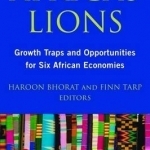Africa's Lions: Growth Traps and Opportunities for Six African Economies
BookThis item doesn’t have any media yet
2016 | Business & Finance
Examining the economic forces that will shape Africa's future Africa's Lions examines the economic growth experiences of six fast-growing and/or economically dominant African countries. Expert African researchers offer unique perspectives into the challenges and issues in Ethiopia, Ghana, Kenya, Mozambique, Nigeria, and South Africa. Despite a growing body of research on African economies, very little research has focused on the relationship between economic growth and employment outcomes at the detailed country level. A lack of empirical data has, in many cases, deprived policymakers of a robust evidence base on which to make informed decisions. By harnessing country-level household, firm, and national accounts data - together with existing analytical country research - the authors have attempted to bridge this gap. The growth of the global working-age population to 2030 will be driven primarily by Africa, which means that the relationship between growth and employment should be understood within the context of each countries' projected demographic challenge and the associated implications for employment growth.
Furthermore, a better understanding of the structure of each country's workforce and the resulting implications for human capital development, the vulnerably employed, and the working poor, will be critical to informing the development policy agenda. As a group, the six countries profiled in Africa's Lions will largely shape the continent's future. Each country chapter focuses on the complex interactions between economic growth and employment outcomes, within the individual Africa's Lions context.
Related Items:
| Published by | Brookings Institution |
| Edition | Unknown |
| ISBN | 9780815729495 |
| Language | N/A |
Images And Data Courtesy Of: Brookings Institution.
This content (including text, images, videos and other media) is published and used in accordance
with Fair Use.
